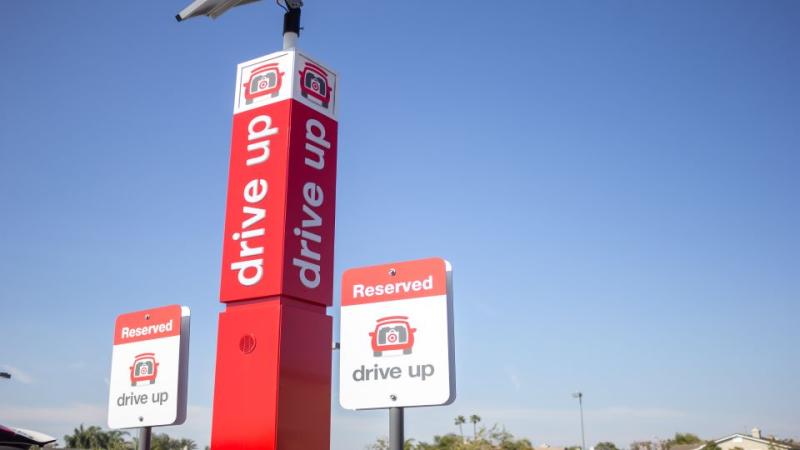Target Pivots After Disappointing Quarter, Nurtures Growth With Tech-Driven Fulfillment and Store Evolution
Target’s second quarter earnings are reflective of the unpredictable environment we’re all navigating. Following disappointing results, after almost two years of positive profits and record revenue growth, Target has its eye on long-term strategies, investing heavily in store transformations, retail partnerships, and a tech-powered supply chain.
The company’s second quarter earnings were down 89.2% from $3.65 per share in 2021. Additionally, operating income was $321 million in the second quarter, down 87% from $2.5 billion in 2021, reflecting a decline in the company's gross margin rate.
However, Target remains optimistic. Brian Cornell, the company’s chairman and chief executive officer, said he’s “really pleased with the underlying performance” of the business, which has increasing traffic and sales growth amid “a very challenging environment.”
John Mulligan, Target’s chief operating officer, said during a call with investors that the team remains passionately focused on the long-term investments they are making for the future.
[Related: The Anti-Mall: How Innovative Store Partnerships Are Changing the Face of Retail]
“These investments include our work to modernize and expand our store footprint, increase upstream capacity in our supply chain, and automate distribution center processes to reduce store workload and enhance our last-mile fulfillment capabilities by opening sortation centers and integrating them into our Shipt network,” Mulligan added.
Strengthening the Supply Chain
In order to foster continued growth long into the future, Target is doubling down on its supply chain, particularly fulfillment. Mulligan said the company is making moves to keep its distribution center (DC) network operating at or below 85% capacity to reduce costs and operational difficulties.
To do this, Target is modernizing its DCs. The company stated it has three main priorities:
- Build additional upstream capacity in Target’s network. To do this, the company plans to open six new upstream facilities over the next several years (two of them in 2023)
- Develop and automate processes that reduce the amount of store workload, devoted to receiving inventory and restocking store sales floors.
- Expand the number of sortation centers across the U.S. Six are operating today, with three opening in just the last few months. Five more will likely open by early next year.
“These small facilities expand ship-from-store capacity in the locations they serve, while significantly reducing last-mile delivery costs, particularly as we integrate our Shipt drivers into the process,” said Mulligan in a call with investors. “Given the package delivery density we've achieved across many markets over the last few years, we see continued opportunities to add more sortation centers over the next few years, which adds speed and significantly reduces last-mile costs in markets where they operate."
While digital fulfillment is growing at a rapid pace — three years ago it accounted for about 7% of total Target sales and now it’s more than 10% — Cornell said the company is looking beyond that to satisfy consumer needs no matter how they are purchasing.
“Beyond our assortment, our unique storage operating model offers unmatched flexibility in how we can fulfill guest demand,” said Cornell. “Whether a guest wants to make a conventional in-store shopping trip, place a drive-up order, arrange a Shipt delivery, or simply have a box delivered to their front door, stores can fulfill every one of those needs quickly and reliably, allowing our guests to choose what works best for them in that moment.”
Mulligan said the company is looking at hundreds of fulfillment remodels this year, reconfiguring portions of the store to enhance efficiency, safety, and capacity for drive-up, in-store pickup, and ship-from-store services.
The Future Is Store Transformations and Retail Partnerships
Target is continuing to expand its partnership with Ulta. Announced in 2020, the collaboration has been steadily growing, and the company plans to invest in several hundred locations to add more Ulta shop-in-shops.
According to Christine Hennington, chief growth officer at Target, the beauty segment grew in the high single digits in the second quarter, “reflecting notable strengths in Ulta Beauty at Target.” There’s plenty of room to grow ahead, she said, as the company continues to grow the assortment, bringing in new designer fragrance brands from Coach, Clinique, Kate Spade, and more.
“Of course, we've been rapidly expanding the number of stores that feature an Ulta Beauty at Target, given the incremental traffic and sales they deliver,” said Cornell.
The company is continuing to grow its presence overall, on track to add 24 new locations in 2022. As part of this strategy, Target is undergoing a store remodel program to modernize the shopping experience and enhance staff productivity.
[Read more: Target’s New Times Square Store Showcases Its Flexible New Stores Strategy]
Mulligan said the company is 100 remodels in, with about 100 remodels to go this year. Part of this iniative? Supporting the workforce.
“These investments include the move to a starting hourly wage range of $15 to $24 across the country, enhanced health care, and wellness benefits for a larger percentage of our team; the rollout of an integrating debt-free college educational plan; and our work to enhance the growth and development opportunities available to all of our team members and the team members of color in particular,” said Mulligan.







